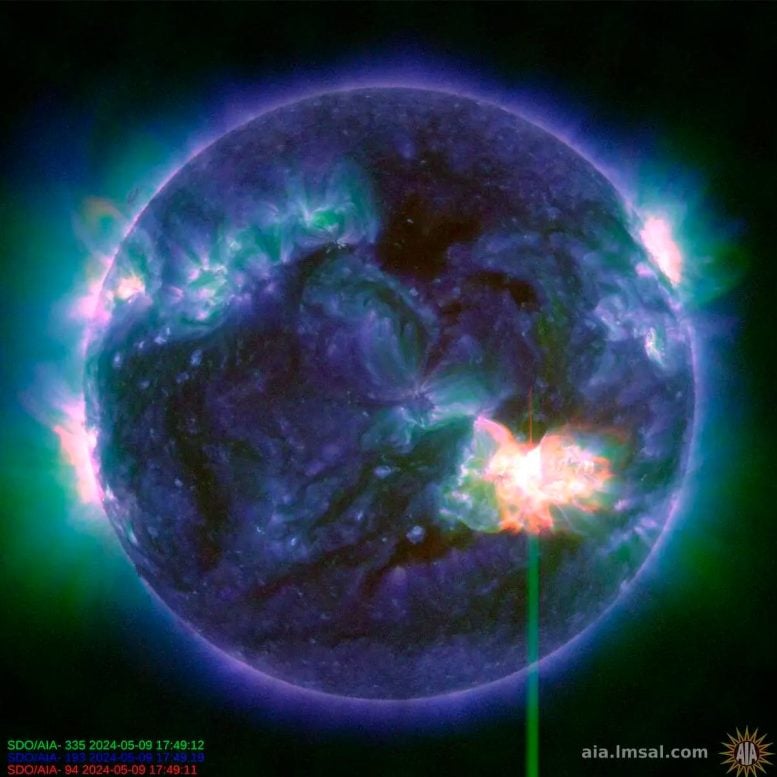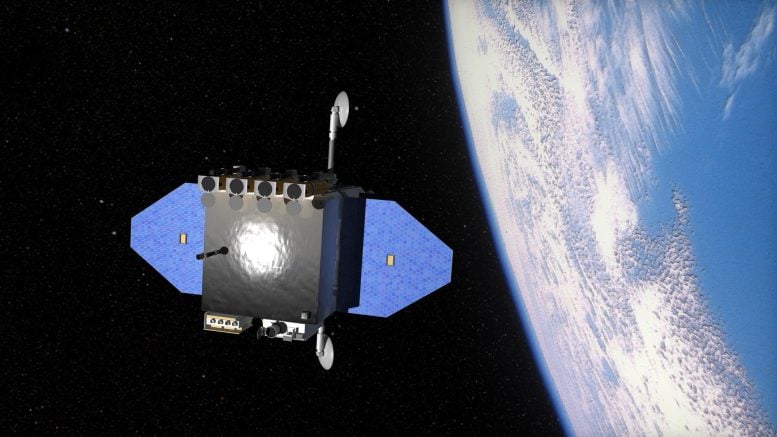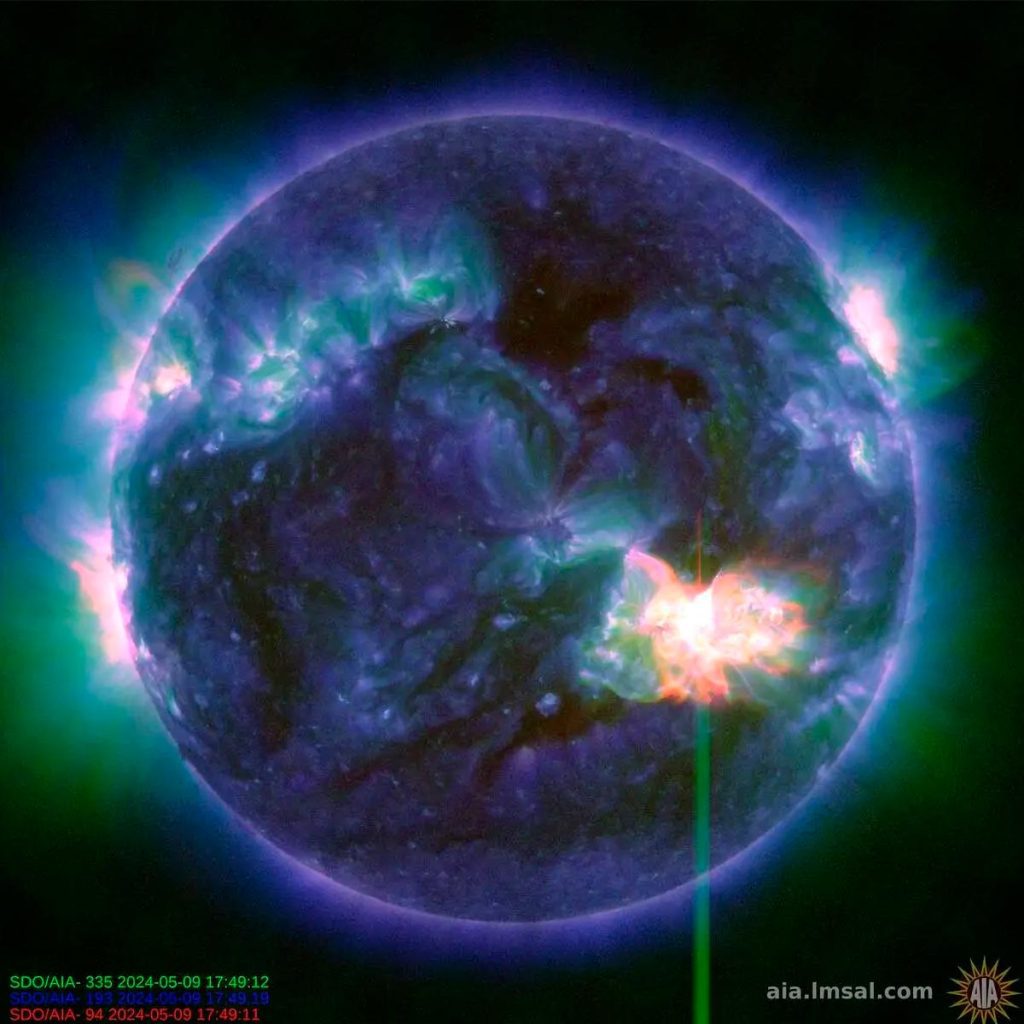
This picture of a solar flare, taken by NASA’s Solar Dynamics Observatory on May 9, 2024, shows a bright flash in the lower right. The photo combines three extreme ultraviolet light wavelengths, colorized in green, blue, and red, highlighting the very hot material in flares. Credit: NASA/SDO
On May 9, 2024, NASA’s Solar Dynamics Observatory spotted a significant solar flare at 1:44 p.m. ET. This observatory continuously monitors the Sun and successfully captured an image of this event. This follows the release of X-class solar flares on both May 7 and May 8.
This flare is labeled as an X1.1 flare. X-class indicates the most intense flares, while the number gives more information about its strength.
Solar Flares
Solar flares are strong bursts of radiation coming from the release of magnetic energy associated with sunspots. These flares are one of the most potent forms of solar activity and are mainly made up of photons, from radio waves to gamma rays. They occur in the Sun’s atmosphere, appearing as bright areas on the sun that can last from minutes to hours.
Flare classification is based on their brightness in the x-ray wavelengths. The classes are labeled A, B, C, M, and X, with A being the least powerful and X being the strongest. Each class has ten times the energy output of the previous one. Within each class, there is a finer scale from 1 to 9 that specifies more accurately how strong the flare is. For instance, an X1 flare is ten times as mighty as an M1 flare but is much weaker than an X9 flare. This system helps scientists and relevant authorities estimate potential impacts on Earth, such as disruptions in communication and navigation systems, and prepare suitable responses.

Artist’s concept image of the SDO satellite orbiting Earth. Credit: NASA
NASA’s Solar Dynamics Observatory
NASA’s Solar Dynamics Observatory (SDO) is a mission launched in February 2010 as part of the Living With a Star (LWS) program. The main aim of the SDO is to understand the Sun's influence on the Earth and near-Earth space by studying the solar atmosphere on small scales of space and time and in many wavelengths simultaneously. SDO has been crucial in providing detailed data about the Sun’s activity and its components such as solar flares, coronal mass ejections (CMEs), and magnetic fields.
Fitted with a set of instruments, SDO captures high-resolution pictures of the Sun in 13 different wavelengths every few seconds. This involves taking pictures in ultraviolet, extreme ultraviolet, and visible light spectrums, which aid in observing the solar atmosphere with incredible detail. SDO’s data is vital for understanding the solar changes that affect life on Earth and the technological systems in space. The observatory helps scientists gain insights into the intricate solar dynamics and supports efforts to predict solar weather with greater accuracy.



